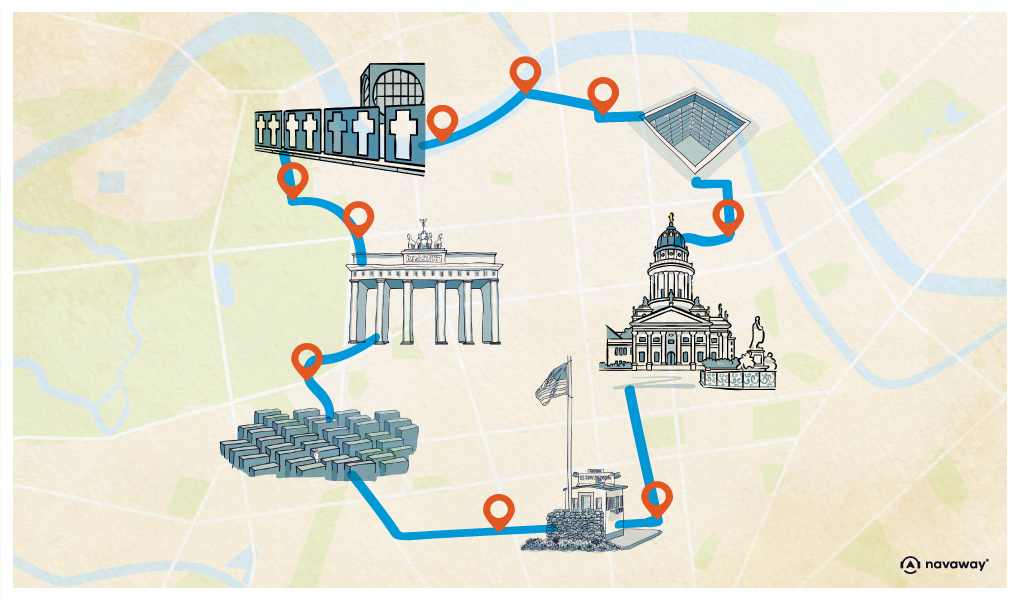
The Crown Prince’s Palace
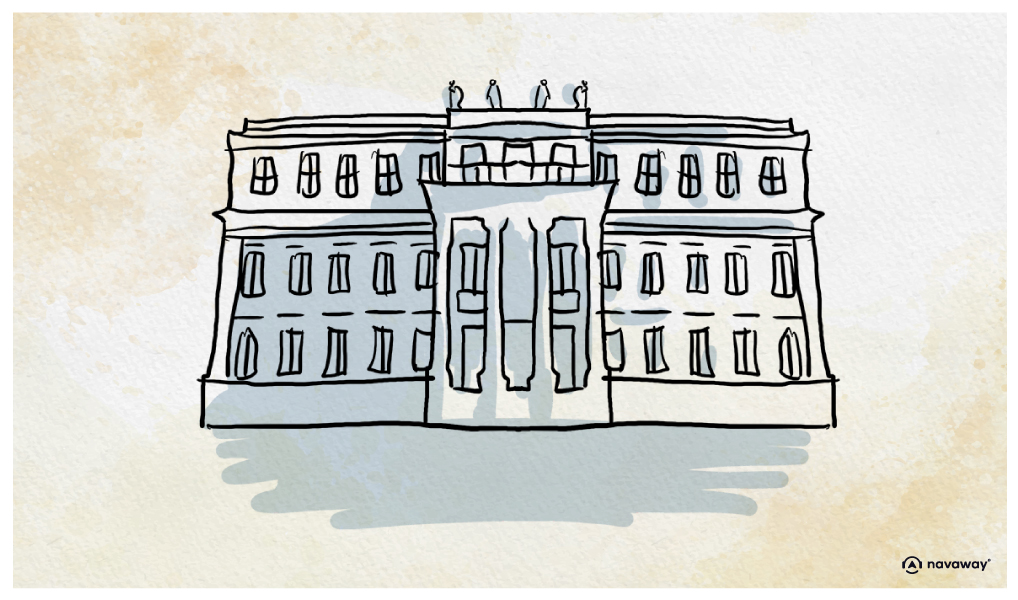
This point of interest is available as audio on the tour: Visit Berlin, On the other side of the wall
In front of you stand several royal residences dating back to the 18th century: the Crown Prince’s Palace and the Princesses’ Palace, which is now home to the Opera Café. The so-called Crown Prince was the title given to the heir to the Prussian throne. This palace was therefore the official residence of Crown Prince Frederick, who would later add “The Great” to his name as soon as he became the first King of Prussia in 1740. He eventually abandoned this place, preferring instead the Sanssouci Palace in Potsdam. However, around thirty years later, his descendants from the Hohenzollern dynasty—Frederick William of Prussia and Queen Louise—grew particularly fond of the place. They even had the Princesses’ Palace built for their daughters. It was connected to the main building by an arch that supported a footbridge. In the 1850s, the roof was replaced with a third floor, and the façade was embellished, notably with the impressive columned portico you see today. It was also within these grand walls that Wilhelm II was born in 1859. He would go on to become the third and final German Emperor. Following the fall of the Hohenzollern dynasty in 1918, the site became home to the Fine Arts wing of Berlin’s National Gallery. The world’s very first collection of contemporary art was contained here. During the early Nazi regime, many pieces of so-called degenerate art were confiscated. By the end of the war, the palace was unrecognisable and left in ruins. The new government of the GDR later rebuilt it, striving to respect its original appearance as much as possible. During this period, it served as a residence for distinguished guests visiting East Berlin. It was within this newly restored palace that the reunification treaty between East and West Germany was signed on August 31, 1990. With Berlin reaffirmed as the German capital, the Senate of Berlin symbolically situated itself here. What might have been merely another baroque façade has, in fact, played a role in some of the most significant moments in the city’s history.

Discover other tours to visit Berlin

Discover Berlin with app
An interactive guide through the most beautiful streets, squares, and districts
30 fun audioguides full of historical facts, anecdotes, and legends
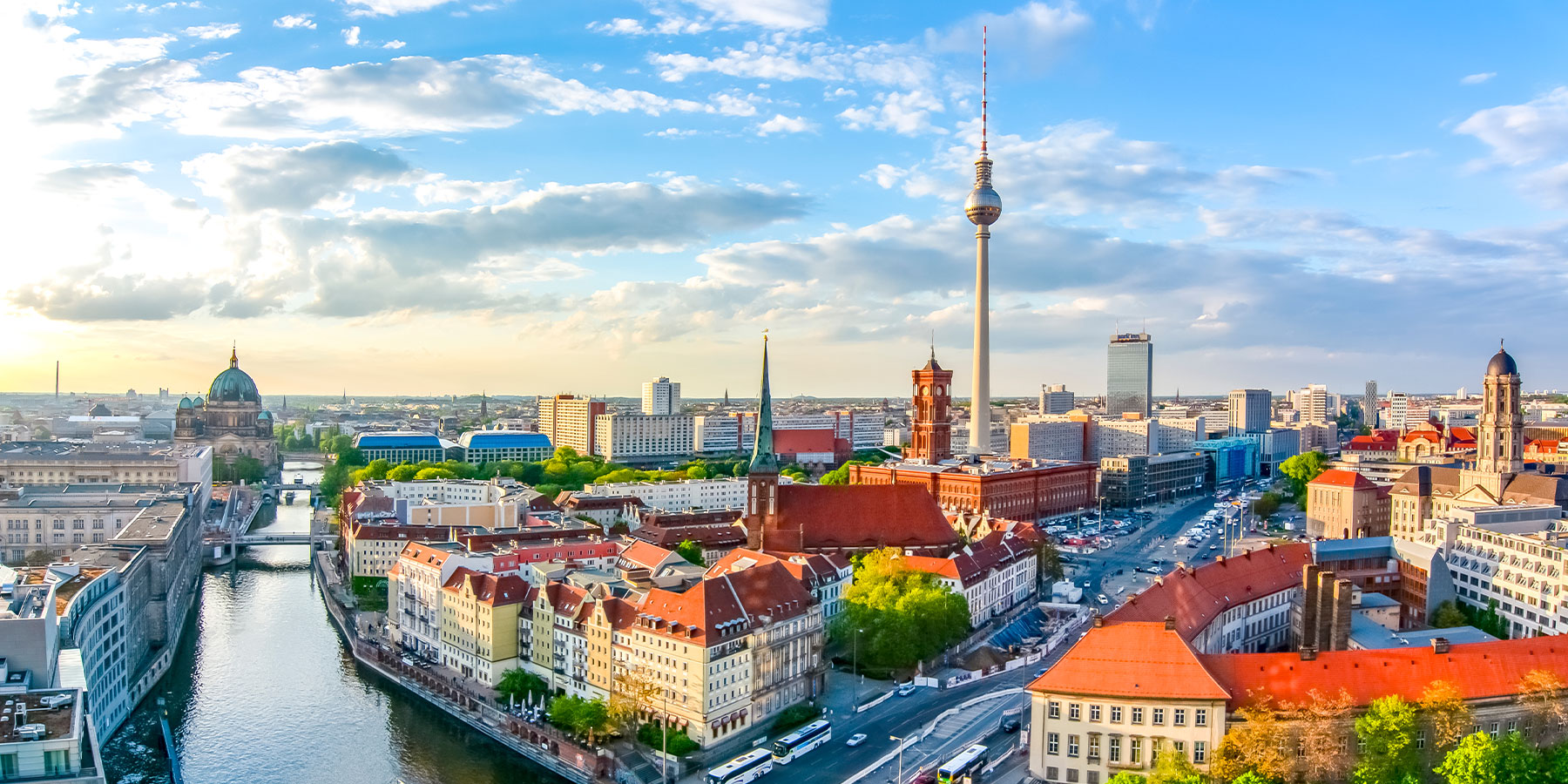

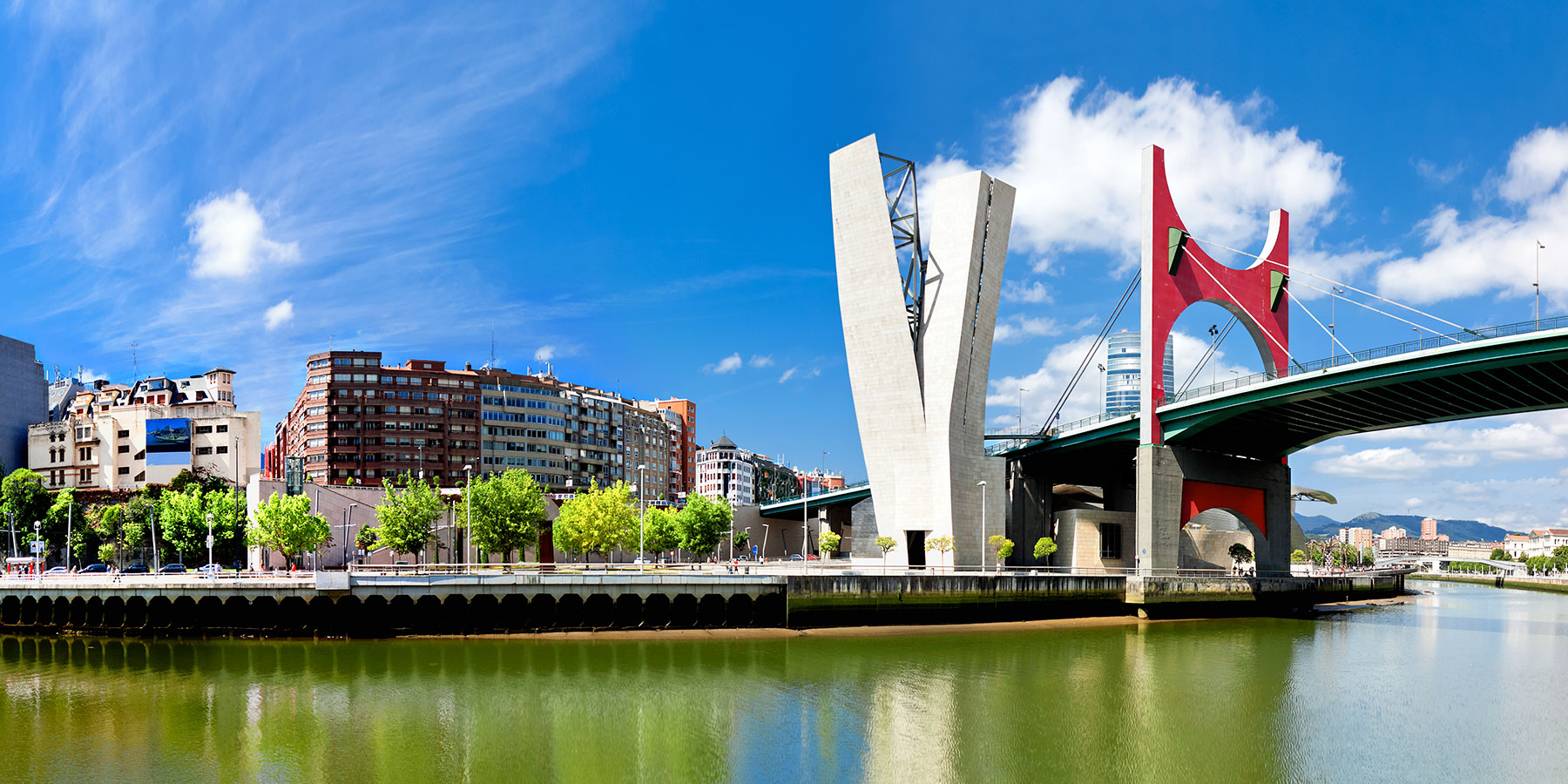
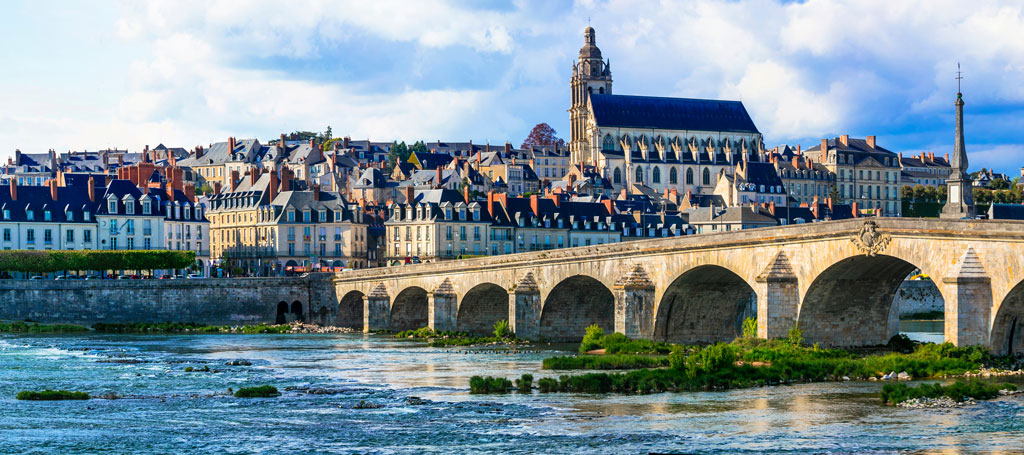


Comments